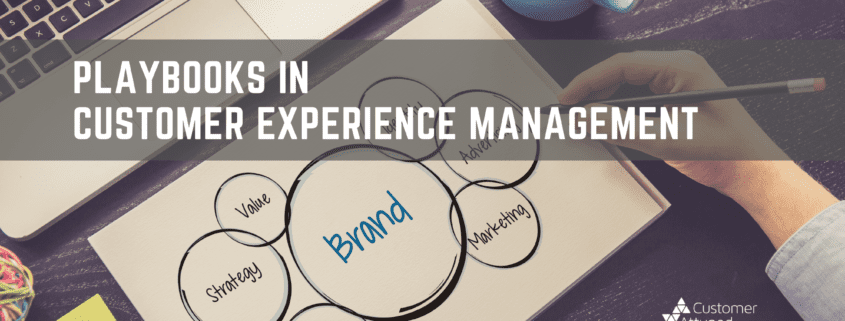Playbooks in customer experience management
In my role as a consultant and adviser to companies across sectors, I am increasingly coming across and hearing about the utilisation of playbooks in customer experience management, that bring consistency and alignment to programmes and campaigns.
What’s a Playbook?
Playbooks are usually the domain of marketing teams to set out in one document (or portal) the brand messaging, communications and content assets that will ensure consistency and quality of advertising and promotional activities across channels and media.
There are several definitions of what a Playbook actually is. I particularly like the definition given by the Content Marketing InstituteTM.
This definition is, of course, specific to one aspect of marketing (content), so a summarised and generalised version is as follows:
Playbooks are all about giving stakeholders a clear view of the main objectives and key messages in play.
They bring added clarity to team roles and responsibilities, align business goals across departments, increase understanding of the brand’s priorities & key messages, and help maintain content quality and consistency.
In short, a playbook makes collaboration easier by putting the information in a practical and easily accessible context.
What have Playbooks got to do with Customer Experience / CX?
When reflecting on this definition, it struck me how relevant these aims are to customer experience management. We need messaging to be clear along the journey. We need clarity of understanding, alignment and collaboration across the business. We need quality and consistency of CX across channels. We need to make the theory of CX and journey mapping practical and easily accessible to the people who design and deliver the experience.
The playbook approach is proving increasingly useful in disciplines beyond marketing, and I would argue that it’s particularly relevant to CX because:
- It helps staff think about customer needs and put themselves “in the customer’s shoes”
- It helps translate lofty good intentions into real-life behaviours that individuals can personally commit to, and specifies the measures by which adherence to quality standards will be assessed
- It helps front line staff tell the brand story and explain the CVP to customers along the customer journey
- It becomes an agent within the organisation for building trust internally and externally
- It’s a concise medium for onward dissemination and embedding throughout the organisation (usually in summarised format) and with external stakeholders (infographics, etc.)
- It is a particularly useful tool for staff training and the induction of new people
Application in the world of CX
I have recently been involved with several projects creating playbooks for different aspects of customer experience management. They are particularly applicable to projects and programmes that require wide stakeholder engagement e.g.
- Developing and explaining a specific B2B Customer Strategy or CX operating model for your business that’s distinct from your marketing and product strategies
- Digging in to customer and staff behaviours and attitudes at key points in the customer journey
- Breaking down elements of your CVP or Customer Charter into the “so what” for customers (and staff)
- Building CX-oriented governance forums and KPI dashboards
- Clarifying the objectives and desired outcomes of the different elements of your Voice of Customer (VoC) or NPS strategy
A ‘page’ of such a playbook might consist of the following content:

When did you last check the following?
- Do you need messaging to be clearer along your customer journey?
- Is there clarity of understanding, alignment and collaboration across your business?
- Do you have excellent quality and consistency of CX across your channels?
- Have you made the theory of CX and journey mapping practical and easily accessible to the people who design and deliver your experience?
![]() Please get in touch if you would like to discuss any aspect of how adopting a playbook approach could help you achieve your CX objectives.
Please get in touch if you would like to discuss any aspect of how adopting a playbook approach could help you achieve your CX objectives.
Further reading
Six Lenses of best practice for Customer Charter Development
Watch: Three Signals your company might not be customer centric
- The Partner Relationship Survey – How it works - July 10, 2024
- Customer Centricity Corner with Peter Lavers – Partner Relationship Survey - June 26, 2024
- Customer Centricity Corner with Peter Lavers – Account Based Marketing - May 30, 2024





